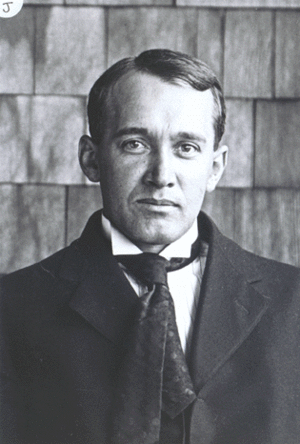Vesto Slipher facts for kids
Quick facts for kids
Vesto Melvin Slipher
|
|
|---|---|
 |
|
| Born | November 11, 1875 |
| Died | November 8, 1969 (aged 93) |
| Resting place | Citizens Cemetery, Flagstaff |
| Nationality | American |
| Occupation | Astronomer |
| Employer | Lowell Observatory |
| Known for | Expanding universe |
| Relatives | Earl C. Slipher (brother) |
Vesto Melvin Slipher (November 11, 1875 – November 8, 1969) was an American astronomer. He was the first person to measure how fast galaxies move away from us. He discovered that distant galaxies show a "redshift." This was the first real proof that our universe is always getting bigger. He also connected these redshifts to how fast galaxies are moving.
Contents
About Vesto Slipher
Slipher was born in Mulberry, Indiana. He finished his advanced studies at Indiana University in 1909. He spent his entire working life at the Lowell Observatory in Flagstaff, Arizona. He became an assistant director in 1915. Then he was acting director in 1916. Finally, he became the director from 1926 until he retired in 1952.
His brother, Earl C. Slipher, was also an astronomer. Earl also worked as a director at the Lowell Observatory.
Slipher's Discoveries
Slipher used a method called spectroscopy to study space. Spectroscopy helps scientists learn about the light from space objects. He used it to find out how fast planets spin. He also studied what their atmospheres (the gases around them) are made of.
In 1912, he was the first to see a shift in the light from galaxies. This shift is called a redshift. It means the light from galaxies moves towards the red end of the light spectrum. This happens when objects are moving away from us. This made him the person who discovered galactic redshifts.
In 1914, Slipher also found out that spiral galaxies spin. He was the first to discover this rotation. In 1929, he discovered the sodium layer in Earth's atmosphere.
Slipher was also important for the discovery of Pluto. He hired Clyde Tombaugh and guided his work. This work led to Pluto being found in 1930.
Slipher and the Expanding Universe
Many people think Edwin Hubble discovered the redshift of galaxies. However, scientists like Vesto Slipher already knew about these measurements. They also understood their importance before 1917. Other astronomers, including James Edward Keeler and William Wallace Campbell, also made similar observations.
Later, Hubble and Milton Humason combined their own measurements of galaxy distances. They used Vesto Slipher's measurements of galaxy redshifts. They found that the farther away a galaxy is, the faster it moves away from us. This connection between distance and redshift is now called Hubble–Lemaître's law. It was first written down by Hubble and Humason in 1929. This law became the main idea for our modern understanding of the expanding universe.
Slipher passed away in Flagstaff, Arizona. He is buried in Citizens Cemetery there.
Awards and Honors
Vesto Slipher received many important awards for his work:
- Lalande Prize (1919)
- Gold Medal of the Paris Academy of Sciences (1919)
- Henry Draper Medal of the National Academy of Sciences (1932)
- Gold Medal of the Royal Astronomical Society (1932)
- Bruce Medal (1935)
Two craters are named after Earl and Vesto Slipher. One is the crater Slipher on the Moon. The other is the crater Slipher on Mars. Also, the asteroid 1766 Slipher is named after him. This asteroid was found on September 7, 1962.
See also
 In Spanish: Vesto Slipher para niños
In Spanish: Vesto Slipher para niños

